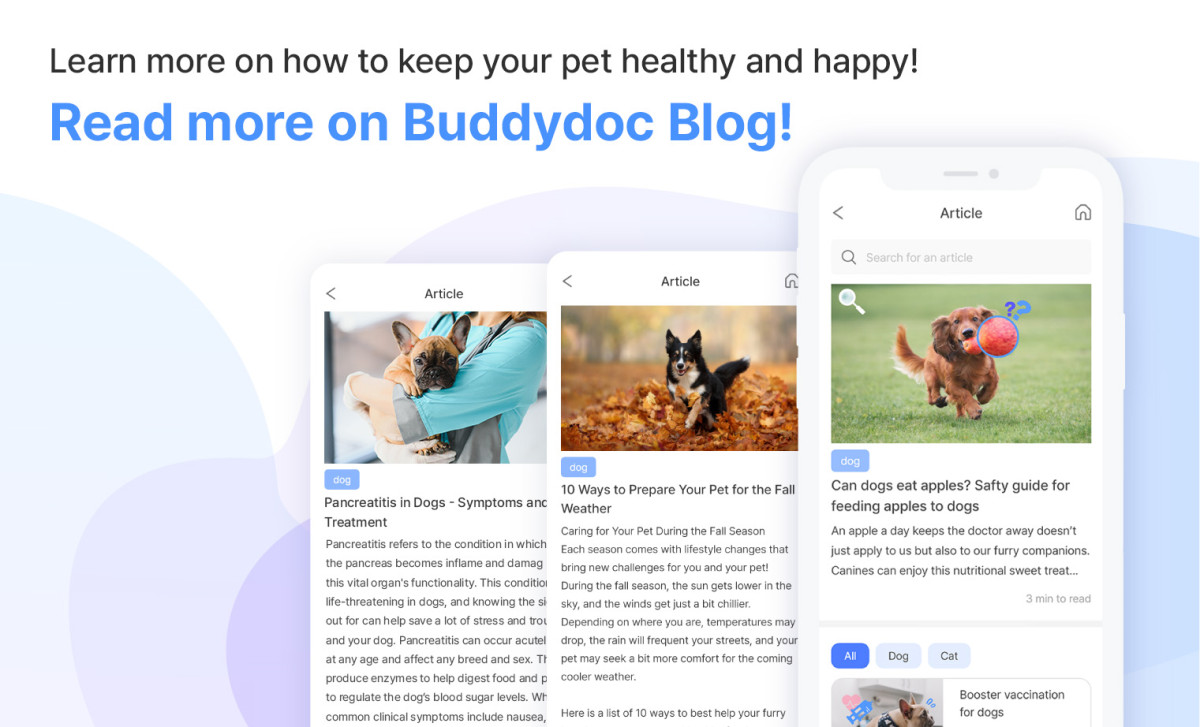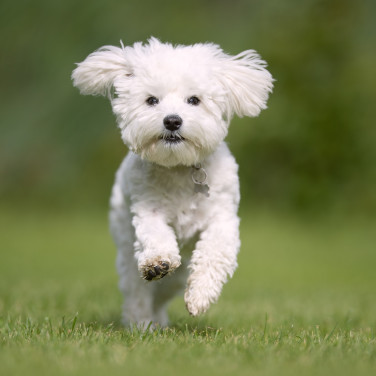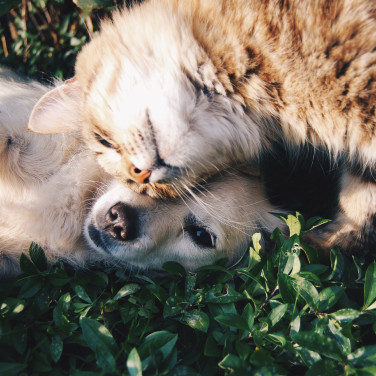ARTICLE
Taking Your Dog For a Drive? Prevention Tips For Dog Car Sickness
페이지 정보
본문
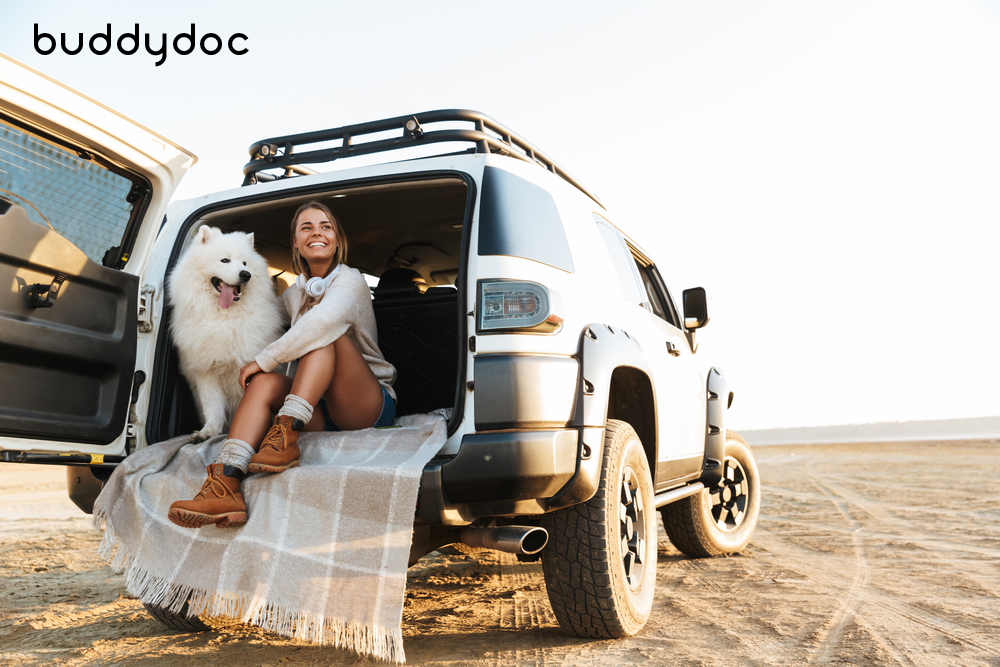
It is mid-August and the heat of the hot summer is beginning to subside. You like many others are planning for that late summer vacation with your beloved pets. Look no further for an all intensive guide for dealing with dog car sickness with Buddydoc! We have included the best tips to help provide you and your dog a safe and comfortable trip.
My dog yawns whenever he gets in the car, is he sleepy?
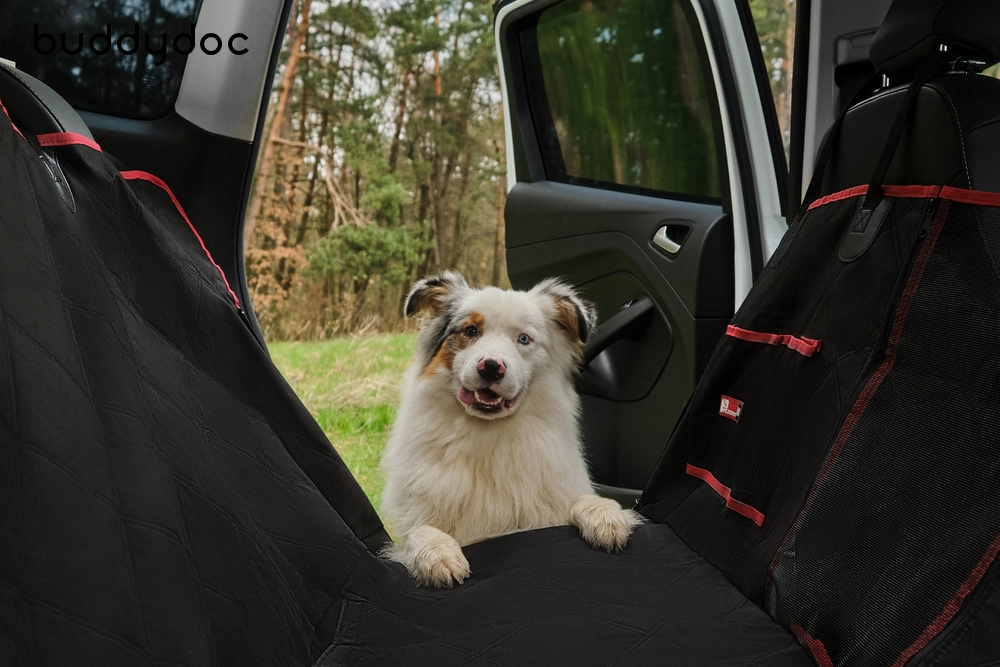
A common sign for car or motion sickness in dogs is often a yawn. It may be useful to pay attention to this sign as you can follow along the tips below to help your dog feel more comfortable for both short and long car rides ahead.
Other signs include any signs of nervousness before getting into your car, scratching their blankets, whimpering, sneezing, or drooling a lot. If your dog seems out of breath suddenly, they may be suffering car sickness as well. In younger puppies, they are more prone to motion sickness because their sense of balance is not fully developed. Puppies have a sensitive sense of smell and may be unable to discern it from the regular scents they are used to, so it may be helpful to note that the smell of leather seats and car air fresheners can cause dog car sickness.
How can I help prevent dog car sickness?
Gradual acclimation
The first to help prevent motion sickness in your dog is to give them time to acclimate to the car. At times, dogs can experience anxiety due to being in unfamiliar situations. Helping your dog become more at ease and less anxious involves slowly introducing them to car rides. Begin with a few relaxing minutes in the car with just the engine running then move along to brief, leisurely trips around your local area. The goal here before your big trip is to progressively extend the length and distance of the rides until they become comfortable being inside a moving vehicle. Remember to reward them positively, using treats or their preferred food, for handling these stressful experiences and potentially anxiety-triggering situations.
Ventilate often
As mentioned before, the smell of car air fresheners or leather seats can be harsh for dogs to tolerate. Leaving the vehicle windows slightly ajar can supply dogs with fresh air and alleviate motion sickness. The combination of fresh air and gentle motion aids in maintaining their inner ear equilibrium as well, leading to a significant decrease in motion sickness symptoms.
TIP! It is also a good idea to ventilate the vehicle in advance to remove any potential irritating smell before they get in the car for the long ride!
Tips for reducing anxiety and excitement before car rides
Before getting in for the longer car rides, let them relieve some of their energy with a light walk or play! If possible, put them in the back seat with their favorite toy and turn on relaxing music to help them distract and relax. If needed, provide them with a small snack during the ride to help with positive reinforcement and act as a tasty distraction.
Create a comfortable environment
For safety purposes, use a wire cage or dog car seat to prevent your dog from getting hurt during the ride. As any unwanted distractions that occur during the car ride can cause both your dog and yourself harm in the process. We do not recommend placing thick cushions or sheets as it can cause more of a hindrance than a comfortable environment for the longer rides. Not only does this tip help reduce the risk of accidents, but it can also be effective in preventing motion sickness by minimizing shaking in the back.
Avoid feeding right before car rides
If you think the journey will be long, it is best to feed them a meal 2-3 hours before beginning your journey together. If it is unavoidable or the timing is of the issue, take a light walk and encourage them to use the restroom to help lower their sense of fullness. It's okay to give their favorite small treats to alleviate anxiety during the ride, but it is best to be careful not to give too much as it can cause motion sickness.
More tips for car sickness in dogs
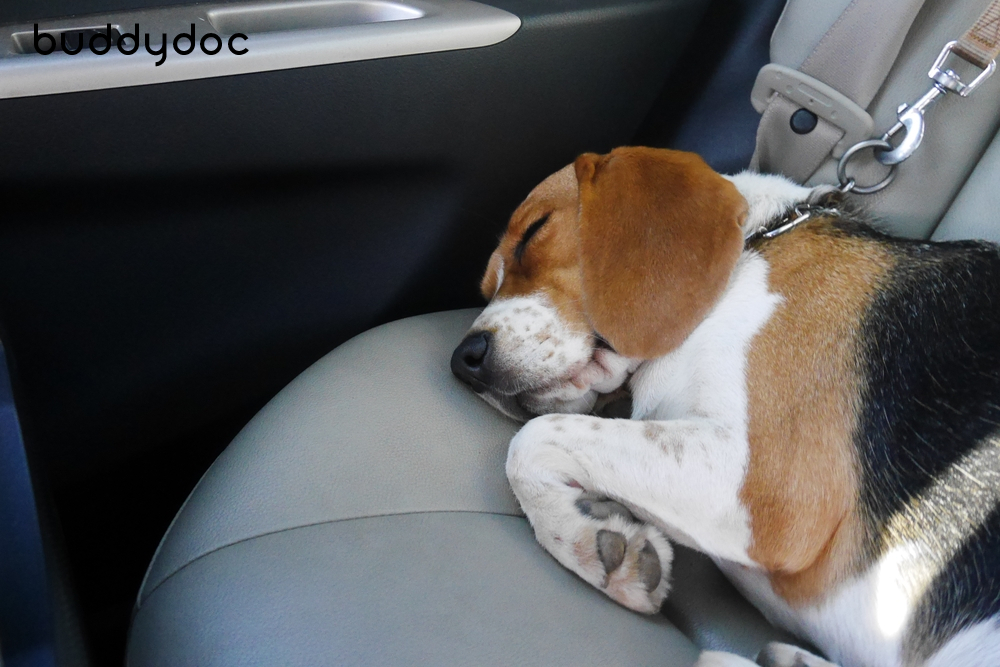
Use of calming aids
If you have tried all of the above methods and your dog still experiences motion sickness. It may be appropriate to consider other options that include prescribed medicine and special phermones to help alleviate anxiety. The use of calming aids should only be administered under the supervision of your veterinarian.
TIP! It is best to give your pet calming aids 30 minutes prior to departure!
Take frequent breaks
Your dog may be doing so well and show no symptoms of car sickness. However, it is still important to let your dog out every hour to an hour and thirty minutes when travelling longer distances. It is a good idea to stop at a rest area or a safe place to rest and take your dog for a light walk and bathroom breaks.
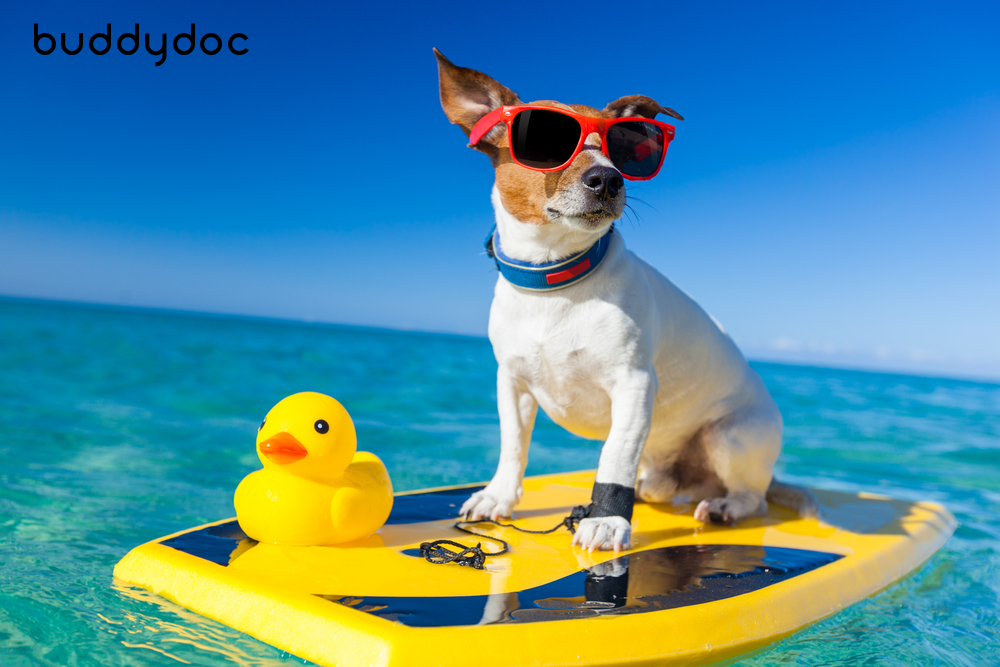
Read more on the Buddydoc blog page or ask any questions to our vet 1:1!
Buddydoc provides a weekly updated blog to keep you informed on the latest and best ways to prepare and take care of your pet all year round. Check out more articles you may be interested in!



